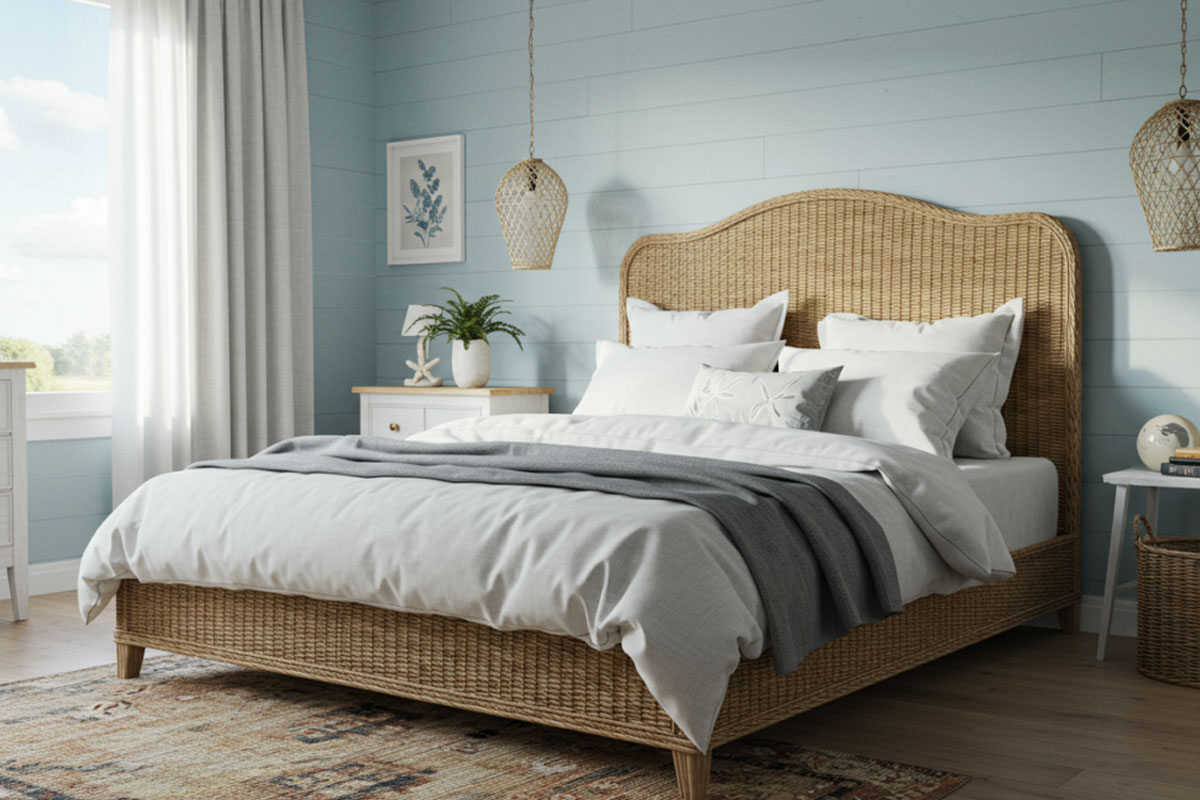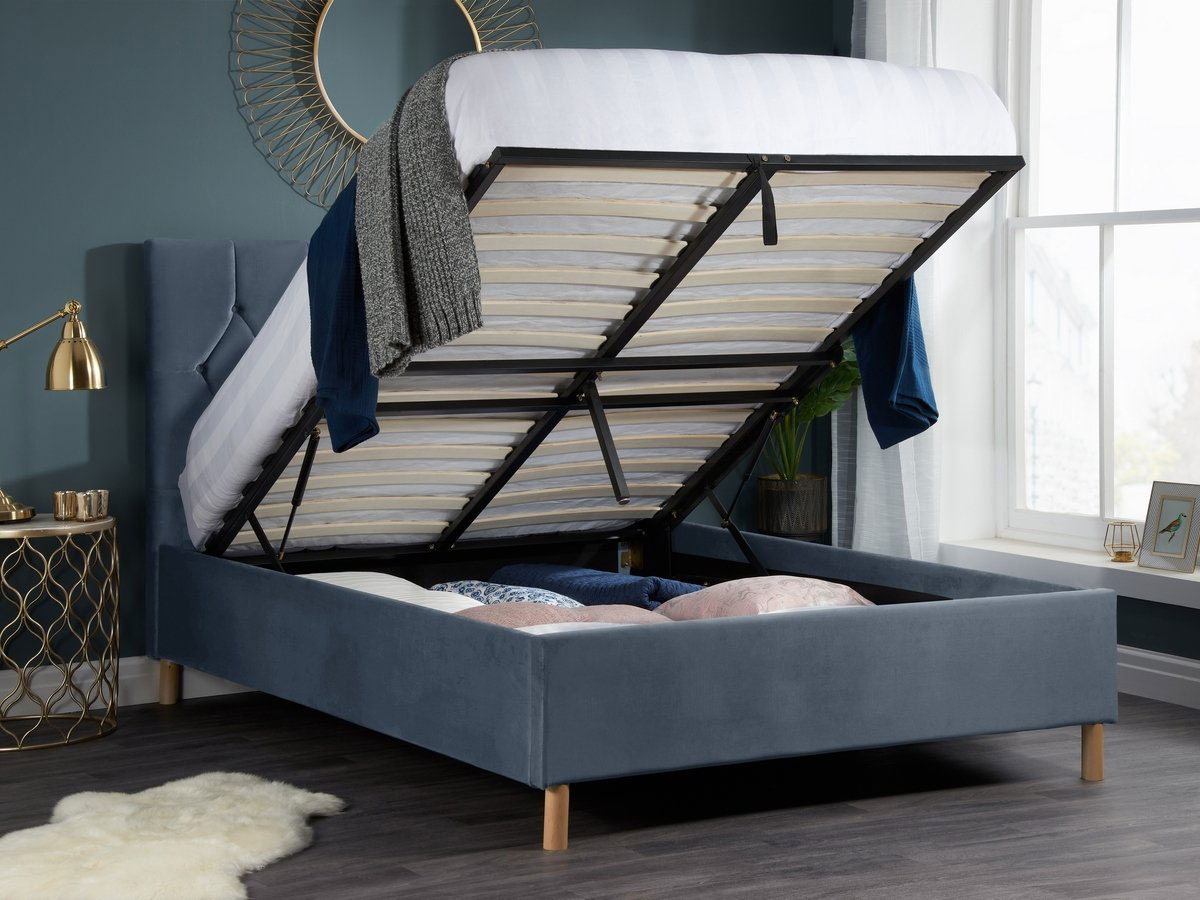Did you know that you’ll spend nearly a third of your life in your bed?
That’s right – your relaxing bed isn’t just furniture, it’s your home for approximately 25-30 years of your lifetime. The bedroom sanctuary you create directly impacts whether you’ll get the quality sleep your body craves.
Here’s something that might surprise you: simply buying a new bed can boost both your sleep quality and quantity by around 42 to 45 minutes per night.
Your perfect sleep setup goes far beyond choosing pretty bedding. The temperature in your relaxing bedroom should sit between 16-20°C for optimal rest, with sleep experts specifically recommending 18°C during nighttime hours. What’s more, research shows that proper ventilation and fresher air are directly linked to better sleep quality.
Why does your bedroom setup matter so much?
Colour plays a huge role in how you feel when it’s time to drift off to sleep. For the most restful environment, sleep specialists recommend soothing, neutral shades that create a calm atmosphere. Plus, weaving in relaxing activities before bed – like reading or journaling – signals to your body that it’s time to wind down.
Your bedroom should be your own personal sanctuary. A space where you can escape from the day’s stresses and truly unwind. That’s exactly what we’ll help you create with this expert-backed guide.
Whether you’re battling restless nights or simply want to elevate your sleep quality, these practical recommendations will show you how to design the ideal environment for restorative rest.
Designing a relaxing bedroom layout that works
Your bedroom layout sets the stage for quality sleep. The way you arrange your space directly influences how quickly you’ll drift off and how well you’ll rest throughout the night.
Which colours will create your perfect sleep sanctuary?
The colours surrounding you make all the difference to your ability to unwind. Cool shades like blues, blue-greens, and lavenders work brilliantly at creating that serene atmosphere you’re after. Blue doesn’t just look calming – it actually helps lower your blood pressure and steady your breathing, which are essential for falling asleep. Green hues bring an instant sense of restoration and help compose your mind, making them an excellent bedroom choice.
For a truly relaxing bedroom, embrace light lilac, pale beige, pale blue, light grey, or light green. You could also try earthy stone-inspired shades like graphite, brown, and soft grey for sophistication without overwhelming your senses. Here’s a tip: avoid stark whites on your walls. Instead, go for warmer tones like cream, vanilla, or almond for a cosier finish.

Image credit Bedstar: Beach themed bedroom interior, blue is known to be one of the best calming colours for the bedroom.
Create visual balance with symmetry
Symmetry brings instant harmony to your bedroom, helping your brain slip into a calm state more quickly. Your bed naturally becomes the focal point – position it centrally against a wall, then mirror elements on either side. Place matching nightstands, lamps, and decorative pieces on both sides to create visual equilibrium.
Balance doesn’t mean everything has to be identical – objects of similar height and volume work just as well. This arrangement signals order and control to your mind, promoting those peaceful feelings you need for quality sleep.
Keep pathways clear and furniture minimal
Your relaxing bedroom should allow easy movement throughout the space. Keep at least 30 inches between your bed edge and the nearest wall. This clearance means you won’t be squeezing past furniture, which can create unnecessary stress.
Embrace the empty areas between furniture pieces – this negative space provides visual breathing room and lets your eyes rest. Rather than filling every corner, choose simple, purposeful furniture that prevents overcrowding. This minimalist approach reduces visual chaos and creates the sanctuary that supports deep, restful sleep.
Takeaway Tip: less furniture means more space to breathe, both physically and mentally.
How can you fine-tune your sleep environment?
Your bedroom’s visual appeal is just the beginning. Environmental factors play an equally important role in whether you’ll drift off easily each night. These elements create the perfect foundation for your relaxing bed setup.
Block out unwanted light for deeper sleep
Here’s something fascinating: your body produces melatonin in darkness, which regulates your natural sleep-wake cycle. Blackout curtains prevent light from disrupting this melatonin creation, helping you fall asleep faster and stay asleep longer. Even dim artificial lighting can be thousands of times brighter than moonlight, negatively influencing your sleep patterns.
Research shows 63.3% of Norwegian adults use blackout curtains, and for good reason – they block streetlights, early dawn and car headlights that suppress melatonin. For maximum effectiveness, choose triple-weave or foam-lined fabrics that reduce illuminance by up to 99%.
Embrace warm lighting for evening wind-down
Warm lighting wraps your relaxing bedroom in a cosy glow that signals bedtime. For bedside lamps and wall lights, select bulbs with a colour temperature of 2400K. Never use anything higher than 2700K as it will feel too cold.
Blue light can disrupt your circadian rhythm and negatively affect sleep quality. That’s why dimmer switches are brilliant – they allow you to adjust brightness based on your evening activities. Bright enough for getting ready, yet soft enough for unwinding.
Master noise control with simple solutions
One study found people living in noisy areas fell asleep 38% faster whilst listening to white noise. White noise helps by masking background sounds that can disrupt sleep.
Earplugs offer another effective solution – hospital patients who wore earplugs experienced more deep sleep compared to those who didn’t. If you’re using a white noise machine, place it in a corner and keep noise levels no louder than background conversation.
Keep your room cool for better rest
Your body temperature naturally drops as you sleep, so a cooler room makes falling and staying asleep much easier. The ideal sleeping temperature sits between 16-18°C (60-65°F).
Higher core body temperature has been associated with decreased restorative slow-wave sleep. Excessive heat can interfere with REM sleep, leaving you feeling tired when you wake up.
Fresh air makes all the difference
Research shows CO2 concentrations are 3-5 times higher in bedrooms with closed windows. Poor ventilation traps pollution and allergens, contributing to nasal congestion and disrupted sleep.
Air purifiers with HEPA filters can capture 99.97% of airborne particles, including mould spores—which are surprisingly prevalent in homes. Opening windows on days with good air quality promotes proper circulation, helping you breathe easier and sleep better.
How do you choose the perfect bed setup for your needs?
The foundation of your relaxing bed lies in selecting components that work specifically for your body and sleep habits. Your mattress, sheets, pillows, and toppers all play vital roles in creating that restful environment you’re after.
Pick a mattress that suits your sleep style
Side sleepers benefit from softer mattresses that cushion shoulders and hips, whereas back and stomach sleepers typically need firmer support to maintain proper spinal alignment. Medium-firm is often recommended as the most versatile option.
For hot sleepers, mattresses with cooling properties help regulate body temperature, given that core body temperature must drop as you enter sleep. Memory foam offers excellent pressure relief, while pocket springs provide targeted support that prevents “roll together” for couples.

Picture credit Bedstar: Sleepeezee Jessica Mattress
Select breathable sheets and duvet covers
Natural materials ensure optimal breathability and temperature regulation. Cotton remains a popular choice, with 100% cotton offering maximum comfort. Thread count matters—though claims above 600 can be misleading if companies use multi-ply threads.
For hot sleepers, linen excels with its naturally airy, moisture-wicking properties. Alternatively, bamboo provides a silky feel with excellent temperature regulation. TENCEL™ Lyocell actively pulls heat and moisture away from your body.
Takeaway Tip: Natural fibres like cotton and linen will help you stay comfortable throughout the night.
Replace pillows regularly for proper support
Most experts recommend replacing pillows every 1-2 years. This ensures you’re using pillows that remain supportive, clean, and allergen-free. Signs it’s time for replacement include yellowing, lumps, sagging, morning neck pain, or waking up with allergy symptoms.
Different materials have varying lifespans—polyester pillows may last just one year, whereas latex can endure up to three years.
Use mattress toppers for added comfort
A quality topper can work wonders on a too-firm mattress or revitalize an ageing one. For indentations in older mattresses, thicker toppers offer effective cushioning. Memory foam toppers provide cloud-like contouring, whilst cooling options mitigate heat retention.
Side sleepers benefit from deeper toppers (5-10cm) that cradle pressure points. Natural materials like wool create breathable “breaker layers” between your body and mattress, helping hot sleepers stay comfortable throughout the night.
Adding personal touches for calm
The finishing touches you choose will make your relaxing bedroom truly yours. These personal elements engage your senses and create an atmosphere that feels uniquely suited to your needs and personality.
Embrace the power of relaxing scents
Lavender has scientifically proven sedative and hypnotic properties that promote better sleep. Studies show that people using lavender aromatherapy demonstrated improved sleep quality compared to control groups. This effect remained significant even at two-week follow-up. Consider diffusers, pillow sprays, or essential oils—inhaling lavender allows its chemical constituents to enter your circulatory system through the lungs.
Whether you prefer a subtle hint or a stronger scent, lavender creates an instant sense of tranquillity that signals to your body it’s time to unwind.
Make it meaningful with personal displays
Your relaxing bedroom should tell your story. Art, photographs, and treasured objects create emotional connection to your space. Indeed, displaying artwork that inspires you adds visual interest whilst making the room feel inviting. For maximum effect, arrange a few decorative items on shelves or bedside tables.
Think about what makes you smile – family photos, travel souvenirs, or artwork you’ve collected over the years. These personal touches remind you that this space is truly yours.
Smart storage keeps clutter at bay
Clutter affects your ability to switch off. Ottoman beds provide ample hidden storage space for seasonal clothing or extra bedding. Alternatively, decorative baskets keep items organised yet accessible. This approach maintains a clean visual field, helping clear your mind for sleep.

Image credit Bedstar: Loxley Ottoman, 4FT Small Double Bed – Grey
Takeaway Tip: Choose storage solutions that blend seamlessly with your décor – woven baskets for a natural look, or sleek underbed boxes for modern spaces.
Wind down with screen-free activities
Screen-free activities signal to your brain it’s time for rest. Reading, journaling, completing jigsaws, or listening to relaxing music can effectively prepare you for sleep. Notably, these activities provide personal unwinding time that research shows can genuinely improve sleep quality.
Create a small bedside station with your favourite book, a beautiful journal, or a playlist of calming music. These simple rituals help your mind transition from the busyness of the day to peaceful rest.
Your sleep sanctuary awaits
You’ve got everything you need to create a bedroom that truly works for you. From calming colour palettes and smart layouts to the perfect bedding choices, each element plays its part in helping you drift off more easily and wake up refreshed.
The beauty of improving your sleep setup lies in how these changes work together. Your blackout curtains team up with that perfect room temperature. Your supportive mattress pairs beautifully with breathable sheets. Those personal touches – from lavender scents to meaningful photos – make your space uniquely yours.
What’s your next step?
Start with one or two changes that speak to you most. Maybe it’s finally investing in that mattress topper you’ve been considering, or perhaps it’s as simple as rearranging your furniture for better flow. Small adjustments can make a surprisingly big difference to how you sleep.
Remember, your bedroom isn’t just another room – it’s your personal retreat where you’ll spend roughly 25 years of your life. The effort you put into creating this restful haven will pay dividends night after night.
Don’t forget, you can always build on these improvements over time. Your perfect sleep sanctuary might not happen overnight, but with these expert-backed tips, you’re well on your way to nights filled with deeper, more restorative rest.
Sweet dreams await in your newly optimised bedroom. You deserve quality sleep, and now you know exactly how to get it.

